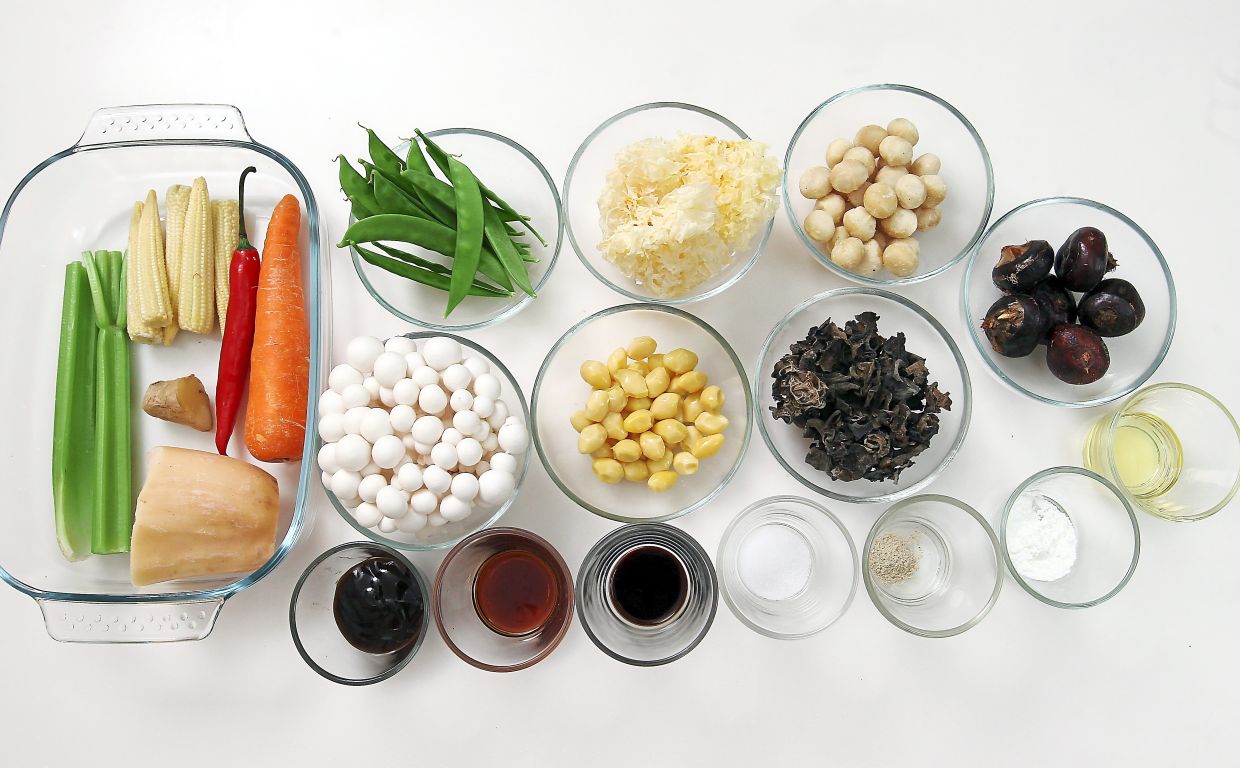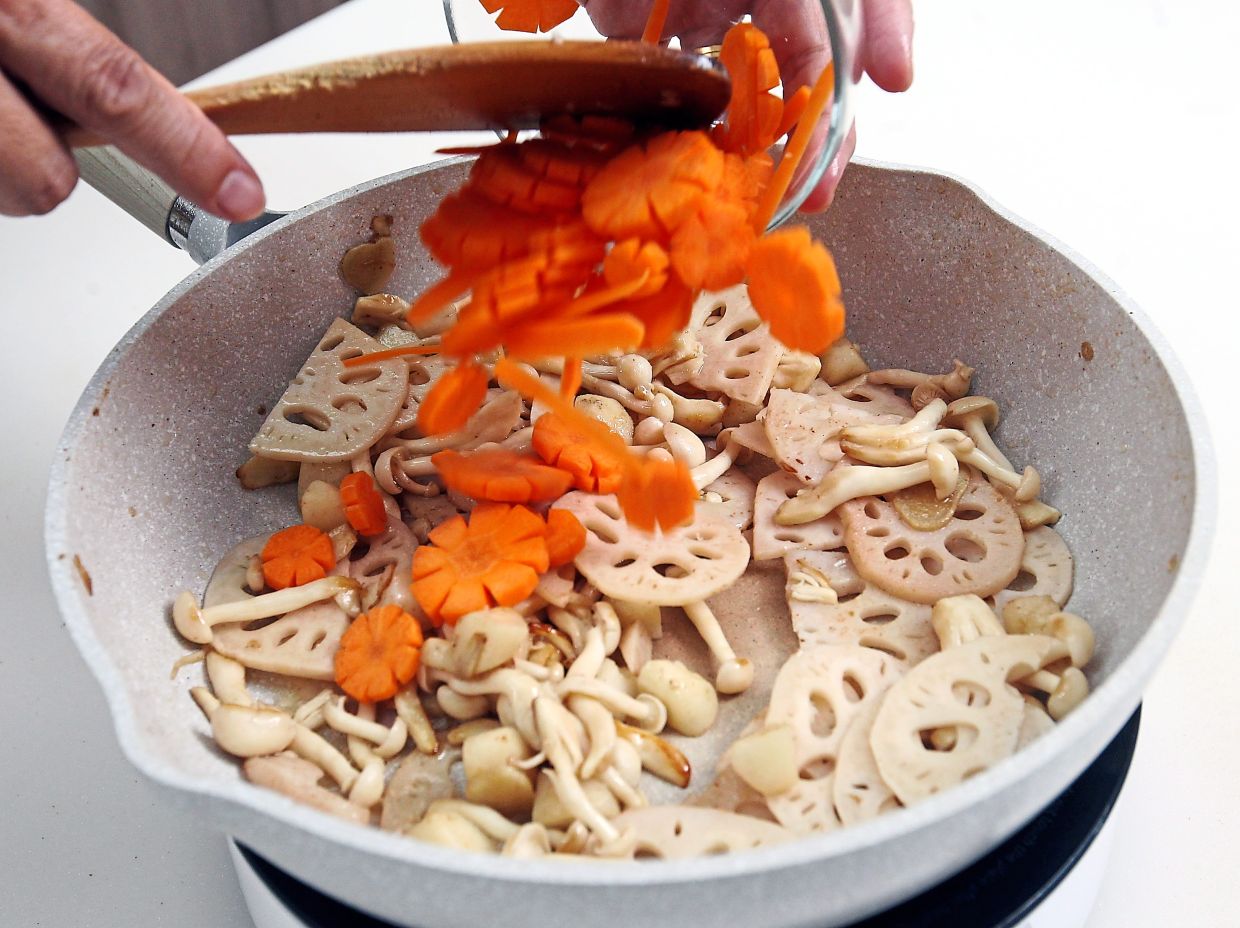FESTIVE meals do not have to be elaborate as long as they contain very high quality ingredients. Even a simple vegetarian dish can be the most luxurious dish in a banquet if it contains fresh produce that translates into impeccable flavour.
This lotus root dish is one of the classics, especially if the family observes vegetarianism on the first and fifteenth days of Chinese New Year. Its name sounds like “abundant year,” which makes lotus root an auspicious ingredient.
In Chinese restaurants, it is usually listed as lotus root with Hawaiian nuts, which are macadamia nuts erroneously attributed to have originated from Hawaii. These nuts are actually indigenous to Australia.
If you are fortunate to come across the white lotus root from Hong Kong, then get them because these are especially suited for this dish. Otherwise, get the young local lotus root from the market. If the only ones available are imported from China, then slice them really thinly because they tend to be more mature and could be fibrous.
The other ingredients are not just supporting actors to these two main stars of the dish. Most recipes list carrots, celery, baby corn, snow peas, snow fungus and cloud fungus to add flavour, colour and texture of the dish. One trick my mother taught me was to cut the carrots into the shape of flowers to add visual appeal.
If you need to adhere to the vegetarian requirement of the dish, you will need to use vegetarian oyster sauce. Despite its name, it is essentially mushroom flavoured sauce and contains no oysters. It may be used in lieu of oyster sauce. Do taste first to ascertain the level of salt and sugar, and adjust the seasoning accordingly.
Although the dish is not soupy wet, there should be enough water in your sauce to provide a bit of gravy to go with rice. This dish, albeit meatless and without garlic or onions according to the vegetarian dietary guidelines, has the natural sweetness of the vegetables that will prompt you to eat more rice with it. You have been warned.
Ingredients
50g macadamia nuts
1 knob ginger, peeled and sliced
200g lotus root, peeled and thinly sliced
100g carrots, peeled and sliced
100g water chestnuts, peeled and sliced or quartered
70g baby corn, cut into chunks
70g ginkgo nuts, peeled and germ removed
100g bunapi mushrooms, separated
10g cloud fungus
10g snow fungus
70g celery, sliced
50g snow peas, deveined
1 pod red chilli, seeded and roughly cut
2 tbsp sesame oil
4 tbsp cooking oil
Seasoning
4 tbsp vegetarian oyster sauce
1 tbsp soy sauce
½ tsp sugar
¼ tsp white pepper
1 tsp cornstarch
½ cup cold water
Method
Soak cloud fungus and snow fungus in cold water for about 30 minutes.
Drain and trim off the stems, then separate into thumb-size pieces and set aside.
Heat oil in a frying pan over medium and fry macadamia nuts until lightly seared, remove from oil and set aside.
Add sesame oil to the existing oil in the pan and sauté ginger until fragrant.
Add in, one at a time, lotus roots, carrots, water chestnuts, baby corn and ginkgo nuts, and saute until slightly wilted but still crunchy.
Add mushrooms, cloud fungus and snow fungus and saute until incorporated. Add celery and snow peas to cook briefly to retain crunch and colour.
Finally, add the seasoning to the vegetables and toss until all the flavours meld together and the gravy slightly thickens. Return macadamia nuts to the pan, toss in red chilli to garnish and serve immediately.







